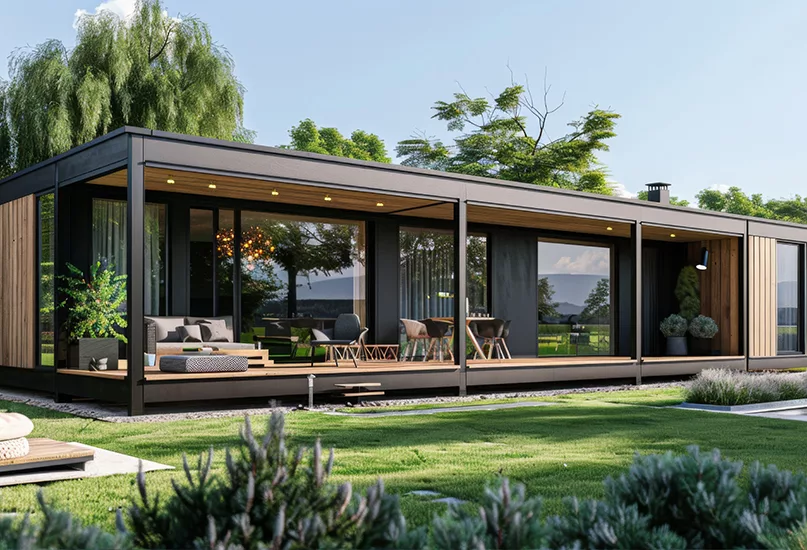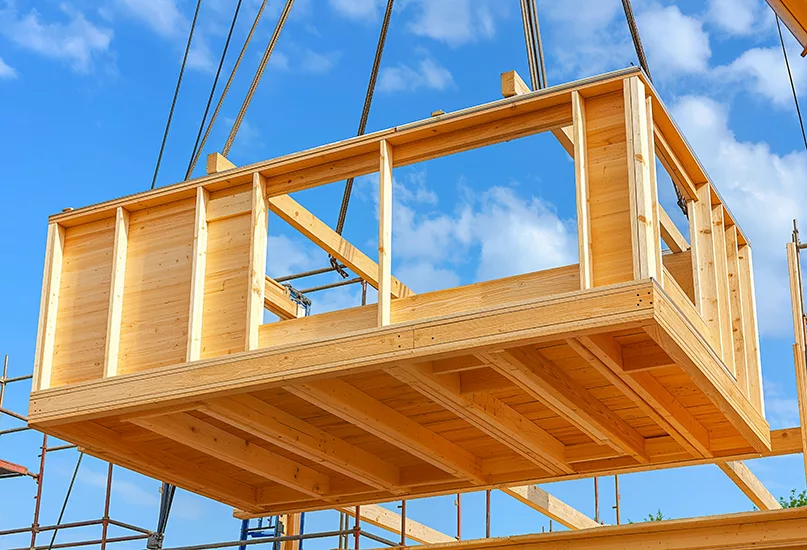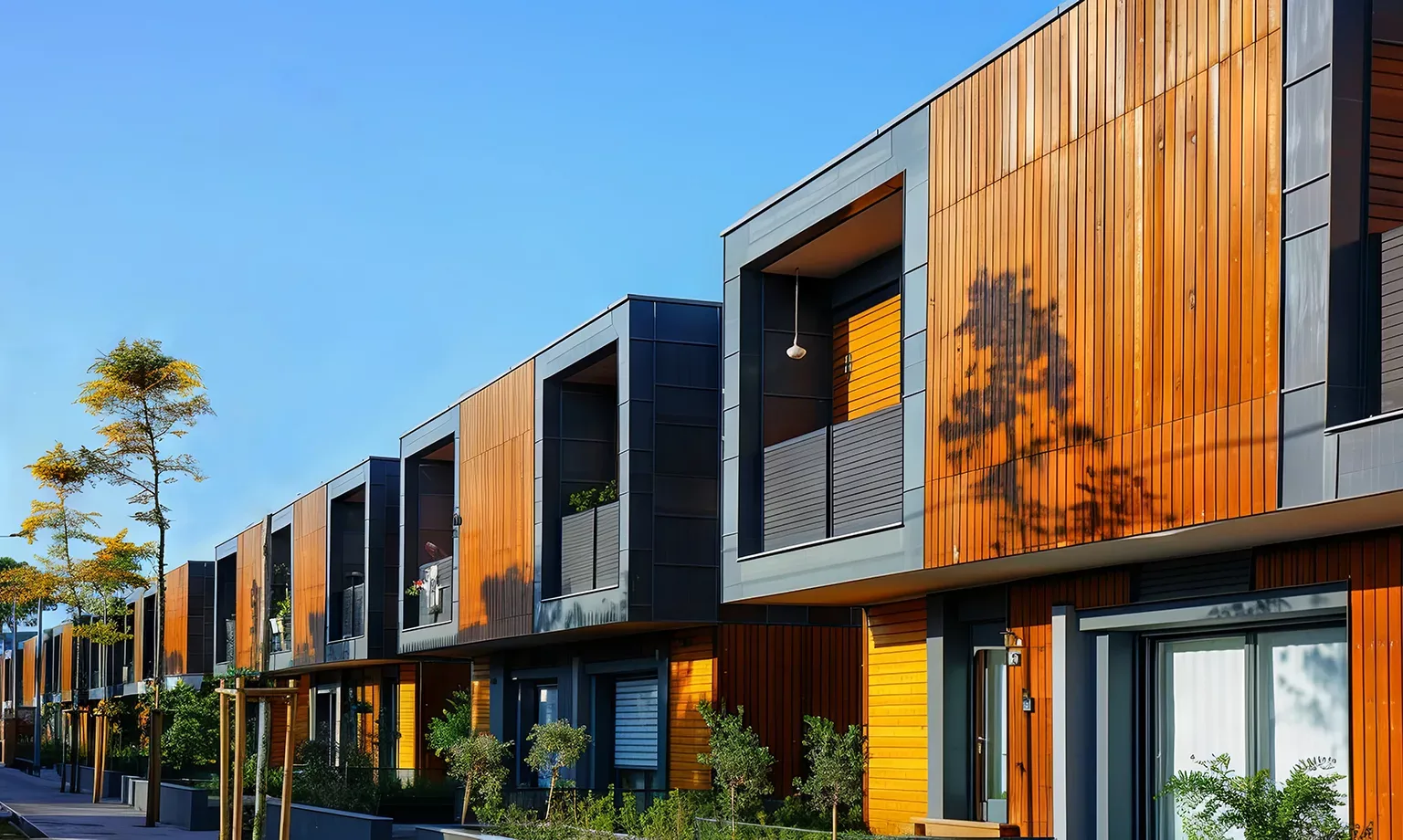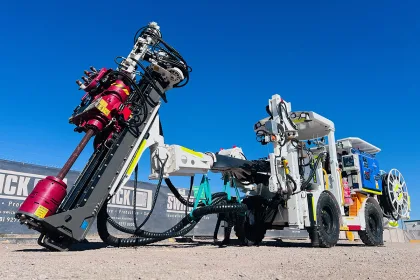As the latest innovation in the Australian property construction sector, we explore how modular housing is making itself at home in the nation’s real estate market, resulting in accessible, modern, and sustainable accommodation.
THE NEW GENERATION OF AUSTRALIAN HOUSING
Heralded as the latest development in prefabricated (prefab) homes, modular houses are becoming increasingly prevalent across the Australian property landscape, offering an attractive alternative to the conventional home.
Representing approximately five percent of Australia’s construction sector, modular housing is defined by the fact that the property is made up of large, predetermined individual components that are created off-site in a specialised manufacturing facility.
Each part is then transported to the final site, where the house is swiftly constructed by connecting the components according to an architectural blueprint.
Typically, modular housing is recognised worldwide for delivering critical disaster relief to millions of displaced individuals, as these structures can be erected much faster and at a greater scale than conventional housing.
In Australia specifically, the modular construction sector plays a vital role in the provision of governmental emergency housing and response to crises by providing accommodation swiftly and securely in the face of natural or man-made disasters.
Evidently, in recent years, modular housing has offered respite to many Australians by providing emergency homes in times of excessive flooding across New South Wales (NSW) and in smaller towns such as Eogowra in the Central West region.
Yet, Australia’s modular housing construction sector is emerging as a purposeful property choice for its affordable but stylish, modern characteristics and sustainable attributes, marking a turning point in the industry.

MODERN AND SUPPORTIVE
Tackling increasing shortages in labour and available residential properties, modular housing is sweeping across Australia one construction site at a time, providing access to cost-effective and stylistic homes.
Fluctuations in the country’s real estate market mean that property labour and manufacturing costs have skyrocketed in recent years, and as a result, modular housing has become an attractive alternative.
Indeed, homebuyers are granted enhanced flexibility in terms of the style and scale of their property, as each part can be manufactured from scratch according to buyers’ specifications, choosing from a variety of designs and layouts.
Consequently, homeowners can access the services of reputable architects who previously would have been out of reach when designing a conventional home due to the reduced costs associated with modular construction.
The industry-wide shift is even reaching the upper echelons of the NSW government, who in June 2024 committed AUD$10 million in state budget to trial the possibility of modular homes being used as a viable source of social housing.
In aid of this initiative, the administration created the Modular Housing Taskforce last year to lead the project to fruition by leveraging the expertise of a cross-industry panel who advise the government on the best ways to capitalise on the benefits of modular housing.
Locations across NSW, including Wollongong and Lake Macquarie, have been chosen to host the first social houses. In fact, a procurement process for the delivery of these homes has already been implemented, with the project expecting to reach completion by 2025.
More from APAC Outlook

ADRESSING SOCIAL AND ENVIRONMENTAL NEEDS
Alongside a multitude of benefits including cost-effectiveness and flexibility, modular housing also has a plethora of environmental advantages.
For example, with most of the construction process taking place inside a specified manufacturing facility, the materials used do not suffer from weather degradation and can also be accurately measured and used responsibly across the entire construction process to minimise waste.
Moreover, once completed, modular housing is 50 percent more energy efficient compared to conventional builds and 40 percent more efficient in terms of raw material usage.
Leading the charge in sustainable modular housing, Ecoliv is an Australian family-owned organisation that creates homes in accordance with the country’s lifestyle and landscape, contributing to the regenerative future of the nation’s construction industry.
Sustainability is interwoven throughout the entire modular housing process as each project is specifically planned and designed in a way that minimises the detrimental impacts to the surrounding natural environment whilst maximising homeowners’ comfort and well-being.
Ecoliv offers a vast range of modular housing, including custom-built homes, smaller and more compact secondary dwellings, and social housing.
Regarding the latter, the company’s EcoHaven range offers high-quality, contemporary, and sustainable community accommodation drawn from Ecoliv’s prefab modular designs.
By providing these spaces, the company is helping to address Australia’s recent endeavours in providing more affordable housing whilst simultaneously having a lasting eco-friendly impact.
HOUSES OF THE FUTURE, TODAY
As the widespread use of modular housing intercepts the mainstream property market, the future of the Australian modular construction sector looks certain to continue on an upward trajectory.
This is particularly the case when considering the recent technological advances that are dominating the nation’s modular construction industry.
For instance, developments in the use of building information modelling (BIM) demonstrate the progression of the design and construction process, ensuring that each modular component is accurately built to align with the rest of the structure.
Meanwhile, enhanced abilities in robotics and automation are also filtering into the modular housing sector, as the technology provides innovative solutions to manufacturing and production lines.
Elsewhere, growing governmental support is also an integral factor in sustaining the expansion of modular housing across Australia’s remote areas and major cities.
As more properties appear in the marketplace thanks to administrative support, attitudes towards these homes will begin to shift, resulting in greater modular property developments.
Whilst contributing to a more eco-friendly property market, modular housing also diligently addresses the estimated rise in the Australian population and the expected increase in urbanisation across the country, making them a future mainstay of Australia’s streets.





































